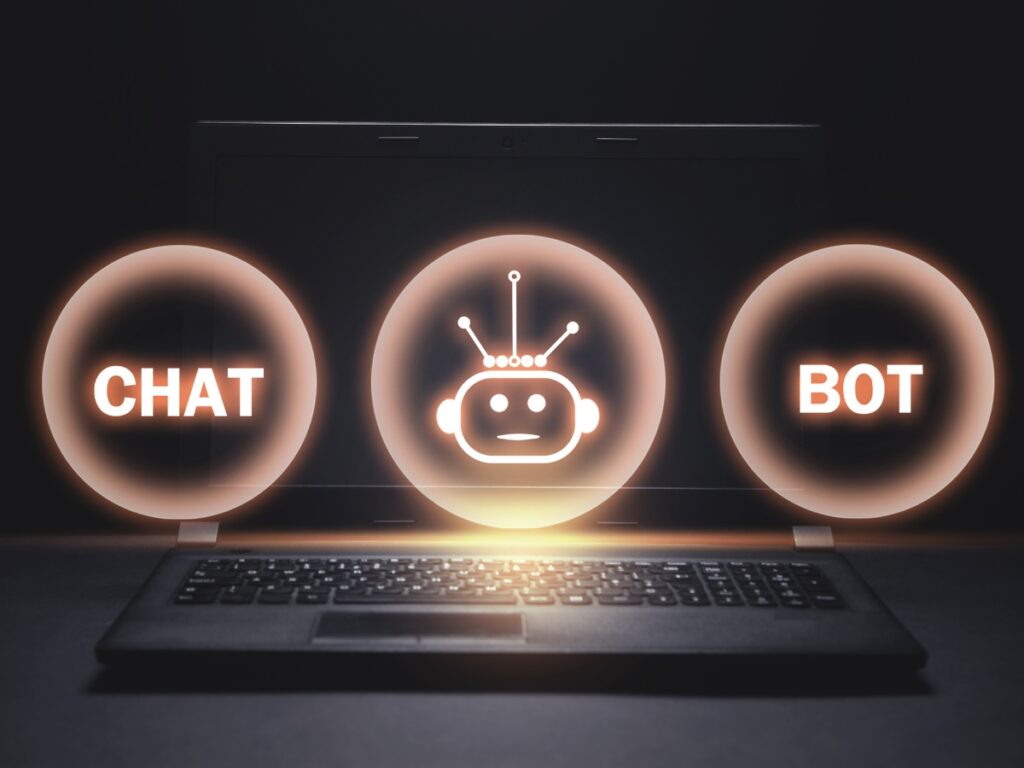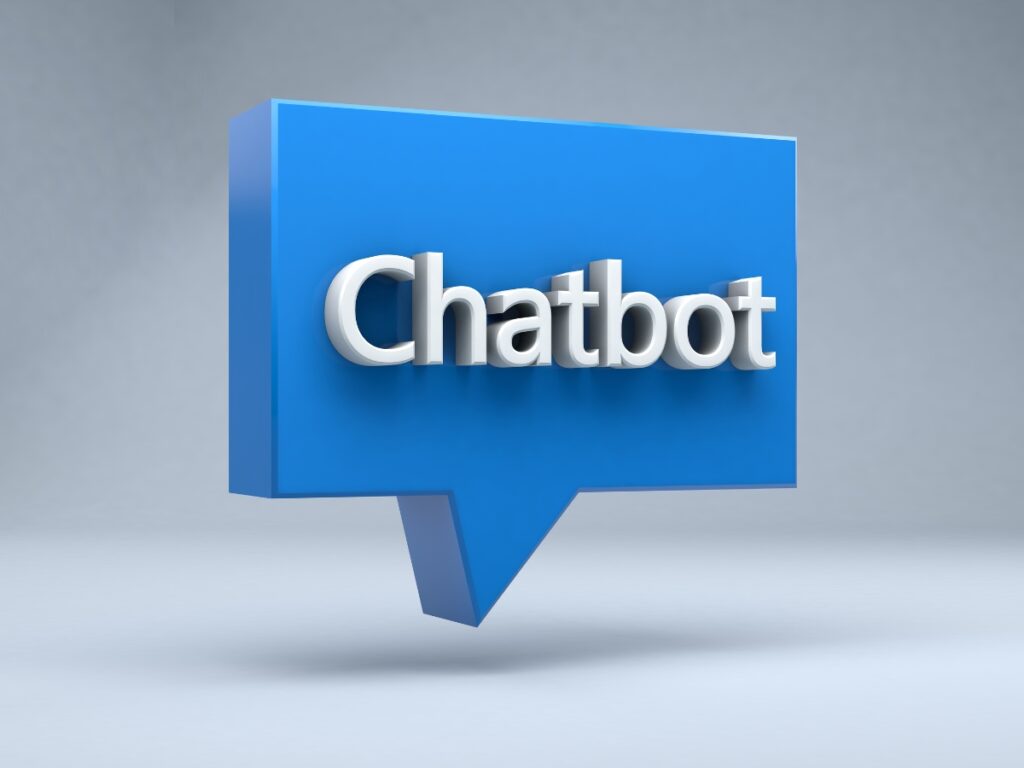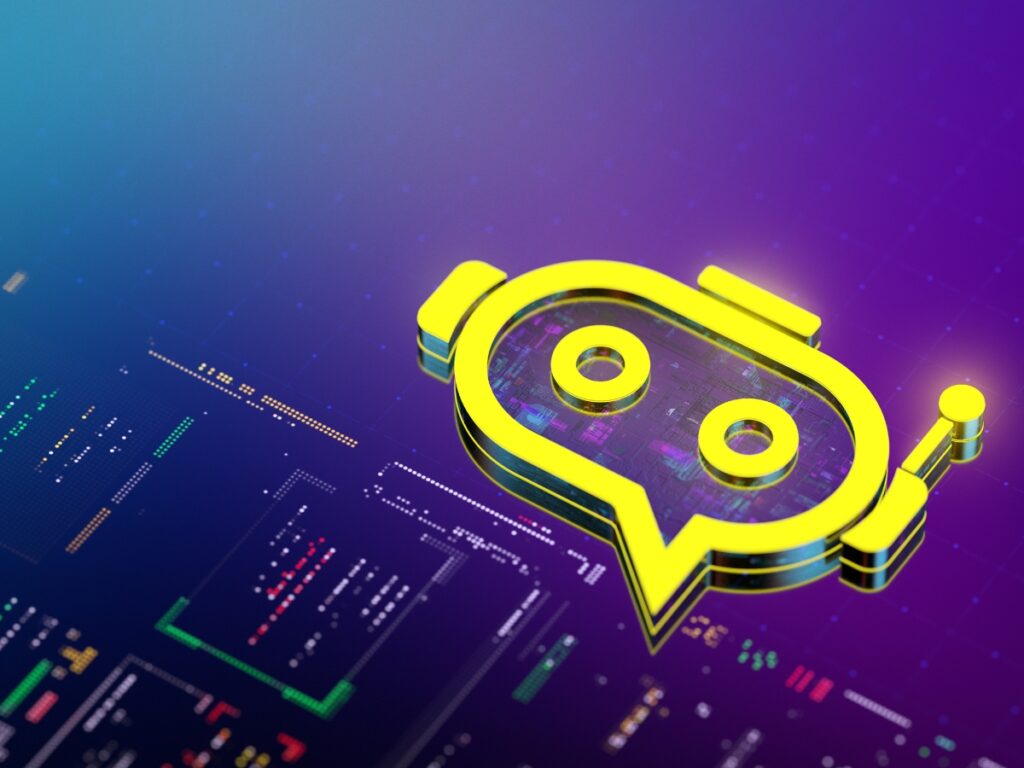This guide offers a comprehensive exploration of chatbot success metrics and pivotal tools in evaluating and enhancing the performance of digital chatbot solutions. We will dive into their significance, examine their different types, and understand their role in shaping an optimized and impactful chatbot strategy.
Quick Overview – For Those on a Tight Schedule:
- Chatbot success metrics are the foundation for measuring the effectiveness and impact of chatbot implementations. They provide insights into user engagement, resolution rates, and customer satisfaction, painting a clear picture of a chatbot’s value and areas of improvement. By effectively monitoring and acting upon these metrics, businesses can ensure their chatbot strategies are aligned with desired outcomes and end-user expectations.
- In today’s competitive digital landscape, leveraging chatbot success metrics is no longer optional; it’s imperative. These metrics empower organizations to continually refine their chatbot experiences, ensuring they meet and exceed modern users’ dynamic demands. Through these insights, businesses can foster meaningful interactions, drive user loyalty, and cement their position as industry leaders.
Welcome to the tenth Blue Lane Group article in the Best Chatbots for Customer Service: Blueprint for Success in 2023 series. These posts examine the essential chatbot topics of customer service automation, exploring how chatbots revolutionize interactions, enhance user satisfaction, and redefine the benchmarks for excellence in modern customer-centric businesses.

Disclosure: The digital products mentioned in this article are highly regarded in the marketplace and are endorsed by the Blue Lane Group staff. We may earn a commission at no additional cost if you purchase through the provided links.
Table of Contents

Introduction: Navigating the Landscape of Chatbot Success Metrics
The digital transformation wave has ushered in an era of chatbots becoming pivotal players in business interactions. From customer support to lead generation, these virtual agents enhance experiences and automate tasks, making businesses more efficient.
But as their presence becomes ubiquitous, understanding their effectiveness becomes paramount. Enter the realm of chatbot success metrics – the crucial set of parameters that give insights into a chatbot’s functionality, user acceptance, and overall performance.
Understanding the Significance of Measuring Chatbot Performance
The saying “what gets measured gets managed” holds particularly true for chatbots. It’s akin to navigating a ship without a compass and performance metrics.
Evaluating chatbot performance isn’t just about ensuring the bot is working; it’s about understanding its impact on users, aligning its functionality with business goals, and iterating for continual improvement.
Businesses can tailor chatbot experiences, minimize errors, and ensure they deliver consistent value to users and the organization by measuring performance.
The Evolution of Chatbot Analytics Tools and Metrics
The journey of chatbot analytics has been one of evolution and refinement. Early on, businesses were content measuring rudimentary metrics like user count or queries answered. But as chatbots grew sophisticated, the need for advanced analytics became evident.
Modern tools, including industry leaders like Botanalytics, Chatbase, and Dashbot, now offer detailed insights into user interactions, sentiment analysis, and conversion metrics.
With the growing complexity of chatbot deployments, from e-commerce to healthcare, the analytics tools have risen to the challenge, providing data-driven insights to optimize chatbot functionalities continually.

Unraveling Key Chatbot Success Metrics
Deciphering a chatbot’s effectiveness requires a keen understanding of various metrics, each offering a unique perspective. Here are some pivotal ones:
- Total Number of Users: This helps businesses gauge the chatbot’s reach and acceptance within the target audience.
- User Engagement Metrics: Companies can determine how users interact with the chatbot by analyzing the bot’s ability to engage and retain users effectively.
- Conversational Analytics: This dives deep into the quality of dialogues, ensuring that the chatbot can maintain relevant and effective conversations.
- Revenue Metrics: For businesses with a direct monetization strategy, linking chatbot interactions to sales or lead generation is crucial.
This array of metrics offers a comprehensive overview of a chatbot’s performance, allowing businesses to iterate and refine their strategies for maximum impact.
Total Number of Users: Gauging Chatbot Accessibility and Reach
When launching a chatbot, one of the primary indicators of its success is the total number of users it attracts. This metric is more than just a count; it signifies the bot’s accessibility, appeal to the target demographic, and overall market penetration.
Tools like Chatbase and Dashbot provide detailed insights into user acquisition, helping businesses identify where users are coming from and which marketing channels are most effective. As this number grows, it indicates the chatbot’s expanding reach and its potential to become a valuable asset in a company’s digital strategy.

User Engagement Metrics: Deciphering Interaction and Participation
User engagement goes beyond mere interaction; it delves into the quality and depth of those interactions. Key metrics here include session duration, number of interactions per session, and the frequency of user return visits.
Products like Botanalytics and MobileMonkey are instrumental in tracking these metrics. High engagement often translates to a chatbot effectively meeting user needs, whether answering questions, assisting with purchases, or providing entertainment.
Analyzing this data helps businesses refine their chatbot’s content and interaction strategies, ensuring users remain engaged and satisfied.
Conversational Analytics: Insights into Dialogue Quality and Effectiveness
A chatbot’s primary function is conversation, so understanding the quality of these dialogues is paramount. Conversational analytics provide insights into how well a chatbot understands user queries and how effectively it responds. Metrics to consider include conversation length, the number of turns in a conversation, and user sentiment.
Platforms like Dialogflow Analytics and Rasa shine in this department, offering deep insights into conversational flows. With these analytics, businesses can identify bottlenecks, common user issues, and areas where the chatbot might be underperforming, allowing for continuous refinement.
Revenue Metrics: Evaluating the Financial Impact of Chatbots
For many businesses, the bottom line is crucial. Thus, understanding the direct and indirect financial impacts of chatbots is essential. Revenue metrics help assess the ROI of chatbot initiatives by tracking leads generated, sales conversions, and upsells facilitated by the chatbot.
Yellow Messenger and Wit.ai are tools that provide robust analytics to trace chatbot interactions to financial outcomes. By linking chatbot activities to revenue, companies can make informed decisions on scaling, refining, or even redefining their chatbot strategies for optimal financial returns.

In-depth Analysis of Select Chatbot Success Metrics
In the ever-evolving landscape of chatbot technology, understanding success metrics is more than just a necessity; it’s an art. Each metric provides a unique lens to view chatbot performance, ensuring it serves users optimally.
As businesses, particularly those in affiliate marketing, hinge on their customer interactions on chatbots, they need these insights for critical decision-making. By selecting and focusing on the right metrics, you can uncover the true potential of your chatbot, optimize its functionalities, and drive higher engagement.
User Satisfaction: A Crucial Parameter for Chatbot Efficacy
One of the most telling metrics for any product or service is user satisfaction; chatbots are no exception. User feedback provides a direct window into the user’s experience with the bot.
Tools like IBM Watson Analytics and MobileMonkey provide comprehensive feedback mechanisms, enabling businesses to gauge user sentiment directly. High user satisfaction rates indicate that a chatbot is meeting its intended goals, while lower rates can highlight areas needing refinement.
It’s an imperative metric for affiliates, as satisfied users are likelier to engage with products and services promoted via chatbots.
Accuracy of a Chatbot: Ensuring Reliability in Responses
A chatbot’s primary function is to assist users by providing accurate information. Thus, ensuring response accuracy is non-negotiable.
An inaccurate or irrelevant response can swiftly deter users, reflecting poorly on the brand. By utilizing platforms like Rasa and Wit.ai, businesses can dive deep into chatbot response analytics, refining them for higher accuracy. For affiliates, response accuracy isn’t just a metric; it’s a trust builder.
Accurate chatbot responses mean users are more likely to engage with affiliate promotions, knowing the information they receive is reliable.
Bounce Rate and Dwell Time: Analyzing User Retention and Engagement
While many metrics give insights into chatbot performance, bounce rate and dwell time provide a peek into user behavior. The bounce rate highlights the initial impression, showing if users find the bot engaging enough to continue the interaction. Dwell time, on the other hand, indicates the depth of engagement.
Platforms like Botanalytics and Chatbase specialize in offering these metrics in detailed formats. Ideally, businesses aim for low bounce rates and high dwell times, signaling captivating and valuable chatbot interactions.
For those in affiliate marketing, these metrics correlate with exposure. Longer engagements mean more opportunities to present promotional content, potentially boosting conversions.

Enhancing Chatbot Performance with Analytics Tools
In the age of data-driven decision-making, harnessing the power of analytics is paramount for any digital venture, especially chatbots. These virtual assistants are the frontline of many businesses’ digital presence, making their optimization essential.
By employing dedicated analytics tools, one can delve deep into chatbot interactions, identify bottlenecks, and refine strategies for better user engagement. Such devices present quantitative data and qualitative insights that can be pivotal for businesses, especially those with an affiliate marketing model.
Bot Analytics: Visualizing Chatbot Interactions for Informed Decisions
Bot analytics stands out in the realm of chatbot-specific metrics and insights. Offering an intuitive dashboard provides businesses with a bird’s-eye view of chatbot interactions. From user demographics to specific conversation paths, Botanalytics paints a comprehensive picture.
Such visualization aids in understanding user behavior, preferences, and potential areas of improvement. For businesses that rely on affiliate marketing, this tool is invaluable. Visualizing interaction paths means they can strategically place promotional content, ensuring higher visibility and engagement.
Chatbase: Google’s Approach to Optimized Chatbot Performance
Chatbase, a brainchild of Google, brings the tech giant’s expertise to chatbot analytics. This platform offers actionable analytics aimed at enhancing chatbot experiences. One of its standout features is the ability to identify problematic areas in bot interactions, suggesting refinements for smoother user experiences.
With Chatbase, businesses can continuously optimize their chatbot, keeping them aligned with user expectations and needs. In affiliate marketing, an optimized chatbot means a more receptive audience, potentially leading to better conversions from promoted content.

Dashbot: Deep Insights for Enhanced User Interactions
Diving more profound than many of its counterparts, Dashbot is tailored to provide deep insights into user interactions. Presenting granular data on each interaction allows businesses to understand the intricacies of user behavior.
Features like sentiment analysis shed light on user emotions during interactions, allowing for more empathetic and effective bot responses. Moreover, with its exhaustive analytics, affiliates can pinpoint the best spots to introduce promotional content, ensuring it resonates with the audience.
Dashbot isn’t just an analytics tool; it’s a compass guiding chatbot strategies toward success.
Dialogflow Analytics: Comprehensive Metrics within the Google Ecosystem
Dialogflow, a renowned product from Google’s suite, has been instrumental in creating and optimizing chatbots. Built within its platform is Dialogflow Analytics, a tool that provides a wealth of metrics for chatbot developers and businesses.
Being deeply integrated into the Google ecosystem facilitates seamless access to comprehensive data, from user queries to intent recognition rates. Such depth enables firms to refine their chatbot interactions, ensuring they are intuitive and effective.
Especially for affiliates, this tool provides insights into how users interact with promotional content, allowing for precise adjustments and strategy finetuning.

Exploring Advanced Chatbot Success Metrics
Beyond the standard metrics lie advanced parameters that give a more nuanced understanding of chatbot performance.
These metrics often dive deeper, looking at the fabric of chatbot-user interactions; for businesses aiming for an excellent experience, leveraging these advanced metrics can differentiate between a good chatbot and a great one.
Goal Completion Rate: Measuring Task Execution Efficacy
Goal Completion Rate (GCR) is a critical metric in the chatbot world. It measures the efficacy of a chatbot in completing specific tasks or goals set by the business. A high GCR indicates that the chatbot successfully guides users to desired outcomes, whether answering a question, processing a transaction, or leading them to an affiliate link.
Tools like Rasa and MobileMonkey offer insights into GCR, allowing businesses to identify areas of improvement and ensure that their chatbot is a productive asset in their digital strategy.
Human Takeover Rate: Analyzing AI Independence and Efficiency
While AI-driven chatbots have made significant strides, there are moments when human intervention becomes necessary. The Human Takeover Rate measures the frequency of such interventions. A high rate might indicate that the chatbot struggles in specific areas, requiring more training or refinements.
Conversely, a low rate showcases the chatbot’s efficiency and ability to handle queries independently. Platforms like Botpress and Yellow Messenger provide insights into this metric. For affiliate marketers, ensuring a low takeover rate is essential as it guarantees that users have a smooth, uninterrupted experience, increasing the likelihood of successful conversions.
ROI / Payback Period: Assessing the Financial Viability of Chatbot Initiatives
The ultimate validation for any business initiative is its Return on Investment (ROI) and how quickly that investment is recouped, known as the Payback Period. For chatbot deployments, these metrics are paramount.
While chatbots offer improved customer interaction and operational efficiency, businesses must ensure their cost outlays translate into tangible financial returns. An optimized chatbot should enhance user experience and increase conversions and sales, which is especially crucial for affiliate marketing.
Tools like Mixpanel and Yellow Messenger provide valuable insights into the ROI of chatbot initiatives, enabling businesses to measure, evaluate, and optimize their investments.

Chatbot Success Metrics Case Studies and Real-World Applications
Delving into real-world applications and case studies offers businesses a tangible look at chatbot success metrics. It’s not just about the numbers but how those numbers translate into real-world successes or challenges.
Examining these case studies illuminates best practices, pitfalls to avoid, and strategies that have proven effective in diverse scenarios. These insights are invaluable for affiliate marketers, providing a roadmap to optimize chatbot interactions for maximum conversions.
Implementing Botanalytics for Performance Visualization
Bot analytics has been a game-changer for many businesses, especially in visualizing chatbot interactions. A real-world application of this tool shows its prowess in dissecting interactions, segmenting users, and highlighting engagement patterns.
With its rich visualization features, businesses can identify which conversation paths yield the best results and which need tweaking. This insight is gold for affiliates, helping determine where and how to introduce promotional content effectively.
The end goal? Ensuring every user interaction leads to optimal engagement fosters trust and promotes conversions.
Chatbase in Action: A Study of Optimized Chatbot Interactions
Chatbase stands as a testament to Google’s dedication to chatbot optimization. Real-world applications of this tool reveal its depth in offering actionable analytics. Businesses using Chatbase have observed marked improvements in chatbot interactions by pinpointing and addressing bottlenecks.
A case in point is its unique feature that identifies problematic areas, suggesting targeted refinements. For those in the affiliate marketing realm, the ability to continually optimize chatbot conversations ensures users are engaged and more receptive to promotional content, leading to increased conversions and revenue.

Rasa’s Role in Understanding User Behavior and Responses
Rasa has emerged as a formidable chatbot development and analytics force. Its open-source nature offers businesses a tailored approach to chatbot creation and optimization. Beyond development, Rasa shines in its analytical capabilities.
Delving deep into user behavior allows companies to understand what users say and why. Combined with conversation paths, sentiment analysis, and intent recognition, these insights empower businesses to finetune their chatbots, ensuring they resonate with the audience.
For affiliate marketers, understanding user behavior is the key to promoting the right content at the right time, making Rasa an invaluable asset.
Top 10 Insights to Unlock Optimal Chatbot Performance
- User-Centric Design: Prioritize user experience, ensuring the chatbot serves their needs efficiently.
- Conversation Depth: Ensure your chatbot can handle multi-layered conversations, offering solutions, not just answers.
- Regular Training: Feed new data to your chatbot to improve its learning and response accuracy.
- Feedback Mechanism: Allow users to give feedback on chatbot interactions, offering insights for improvements.
- Integrate Analytics: Tools like Dashbot and Chatbase can provide deep insights into chatbot performance.
- Optimize for All Platforms: Ensure your chatbot performs consistently across all devices and platforms.
- Focus on Intent Recognition: Prioritize understanding user intent over mere keyword recognition.
- Human Escalation: Always have a mechanism for users to escalate to human agents when needed.
- Continuous Monitoring: Regularly review metrics to identify bottlenecks and areas of improvement.
- Affiliate Content Positioning: For affiliate marketers, ensure promotional content is strategically and naturally placed within conversations.

Metrics Selection: Choosing the Right Parameters for Evaluation
Choosing the right metrics is the linchpin to chatbot success. It’s not about tracking everything but tracking what matters. Metrics like User Engagement Rate, Goal Completion Rate, and Human Takeover Rate offer insights into chatbot efficiency.
However, businesses need to align metrics with their objectives. For instance, affiliate marketers might prioritize metrics related to user engagement with promotional content. T
tools like Stamurai and MobileMonkey assist in customizing metric dashboards, ensuring businesses have a clear view of their chatbot’s performance relative to their goals.
Continuous Improvement: The Iterative Process of Chatbot Optimization
Chatbot optimization is not a one-off task; it’s a continuous journey. As user behaviors change and technologies evolve, chatbots must adapt. By embracing an iterative approach, businesses can ensure their chatbots remain relevant and practical.
This involves regularly reviewing metrics, gathering user feedback, and making informed tweaks. Platforms like Wit.ai and Botpress offer functionalities to refine chatbot interactions based on real-time data.
Emerging Trends: Future Predictions in Chatbot Success Metrics
Chatbot analytics is ever-evolving, driven by technological advancements and changing user expectations. In the coming years, we predict a few standout trends. Personalized analytics, where chatbots adjust in real-time based on individual user preferences and histories, is anticipated to become a mainstay.
Next, with the rise of voice search and digital assistants, voice chatbot analytics will gain prominence. Furthermore, as machine learning matures, predictive chatbot analytics, capable of foreseeing user needs and proactively offering solutions, may take center stage.

What Are the Essential Tools for Chatbot Analytics?
Navigating the world of chatbot analytics can be daunting, given the many available tools. However, specific tools stand out for their efficiency and depth:
- Bot analytics: Dedicated to visualizing chatbot interactions and offering insights.
- Chatbase: Google’s powerhouse offers actionable analytics to refine chatbot performance.
- Dashbot: Provides deep insights into user behaviors, ensuring optimal bot functionality.
- Dialogflow Analytics: A jewel in Google’s crown, capturing key chatbot metrics seamlessly.
- IBM Watson Analytics: Known for its focus on user satisfaction metrics.
- Rasa: An open-source marvel, stellar for understanding user behaviors and responses.
- Wit.ai: Owned by Facebook, it’s a robust tool for refining chatbot interactions.
Each tool offers unique capabilities. The choice boils down to specific business objectives and the desired depth of analytics.
How Do I Optimize My Chatbot’s Performance through Analytics?
Optimizing chatbot performance through analytics involves a systematic approach. Start by setting clear objectives for your chatbot. Then, choose the right analytics tools, like Tawk. to or Yellow Messenger, to gather relevant data.
Analyze the data, paying close attention to metrics like user engagement, bounce rate, and goal completion. Identify areas of friction or bottlenecks. Implement changes based on insights, such as refining conversation flows or adjusting response accuracy.
Lastly, always keep an ear to the ground for user feedback. Their firsthand experiences combined with robust analytics will guide optimization efforts.
How Often Should Chatbot Metrics Be Reviewed and Analyzed?
The frequency of reviewing chatbot metrics largely depends on the chatbot’s objectives and the industry in which it operates. Weekly reviews can be beneficial for dynamic sectors or when launching new campaigns, especially in affiliate marketing.
However, a monthly analysis may suffice for more established chatbots in stable industries. That said, it’s crucial to set aside regular intervals, be it weekly, bi-weekly, or monthly, to dive deep into metrics.
Tools like Mixpanel and TARS offer automated reporting features, ensuring businesses are always informed about chatbot performance.

FAQs: Your Questions About Chatbot Success Metrics Answered
- Q: Why are chatbot success metrics essential?
A: They provide actionable insights into chatbot efficiency, user satisfaction, and areas of improvement. Without these metrics, optimizing a chatbot becomes a guessing game. - Q: Which is the most critical metric to track?
A: There isn’t a one-size-fits-all answer. Depending on your objectives, specific metrics might be more relevant. For example, affiliate marketers may prioritize user engagement with promotional content. - Q: How do tools like Botanalytics and Dialogflow Analytics differ?
A: While both offer insights into chatbot performance, their features, depth of analysis, and integration capabilities might differ. It’s essential to choose a tool aligned with your specific needs. - Q: Are there industry-specific chatbot metrics?
A: Yes. Different industries have unique needs and objectives. For instance, a customer support chatbot might focus on resolution time, while a sales chatbot could prioritize conversion rates.
Forecasting the Evolution of Metrics and Analytics Tools
The future of chatbot metrics and analytics tools is exciting. The demand for sophisticated metrics will rise as chatbots become more integrated into various industries. We might witness the emergence of emotion-based metrics, gauging user sentiment in real time.
Additionally, with augmented reality (AR) and virtual reality (VR) growing, chatbots could play a role in these realms, requiring unique analytics. Tools like Wit.ai or Yseop Compose might evolve to offer insights into text-based interactions and voice, visual, and immersive experiences.
Thoughts on Maximizing Chatbot Performance
Maximizing chatbot performance combines technology, analytics, and a deep understanding of user needs. Here are some critical thoughts:
- User-Centric Approach: Always prioritize the user. Tailor the chatbot to cater to their specific needs and preferences.
- Continuous Learning: Just like humans, chatbots need to learn and evolve. Regularly update them with new information and trends.
- Integrate Advanced Analytics: Use tools like Stamurai or MobileMonkey to get deep insights. Understand not just how users are interacting but also why.
- Feedback is Gold: Always be open to feedback. Direct insights from users can be more valuable than any analytic tool.
- Stay Updated: The world of chatbots is fast-paced. Ensure you’re constantly updated with the latest technologies, trends, and best practices.

Conclusion: The Road Ahead for Chatbot Success Metrics
The surge in chatbot adoption across industries underscores their transformative potential. As these virtual assistants become more sophisticated, the metrics that gauge their success must evolve in tandem. The future will likely see quantitative data points, such as user engagement rates, and qualitative insights, such as user sentiment analysis. This holistic approach ensures chatbots are technically efficient and emotionally attuned to user needs.
Moreover, as the lines between human and machine interactions blur, measuring success beyond just data becomes imperative. The real triumph lies in crafting chatbot experiences that resonate, engage, and ultimately add value to the user’s journey. This future is not just about more innovative chatbots but more empathetic ones.
The landscape of chatbot success metrics is still developing, with vast untapped potential. Forward-thinking organizations will continually iterate, adapt, and innovate, ensuring their chatbots remain relevant and effective in an ever-changing digital landscape. The road ahead is paved with challenges but equally brimming with opportunities. The organizations that effectively harness the power of chatbot success metrics will undoubtedly lead the charge into this promising future.

You Might Also Like
If you enjoyed this article and received value from it, check out the other Blue Lane Group articles in the Best Chatbots for Customer Service: Blueprint for Success in 2023 series:
- Chatbot ROI: Unlock Unmatched Profits with Top 5 Strategies for Optimization
- Omnichannel Chatbots: Unlock Consistent Engagement with 7 Best Practices
- Chatbot KPIs: 10 Essential Metrics to Drive Optimal Results
- Multilingual Chatbots: Break Language Barriers with 8 Leading Solutions
- Enterprise AI Chatbot Solutions: 7 Key Tools to Supercharge Your Business
- Mastering Chatbot Training: 7 Strategies for Optimal User Engagement
- Chatbot APIs: 6 Leading Options for Seamless Functionality
- Chatbot Scripts: 9 Proven Strategies to Boost Conversions and Engagement
- Rule-Based Chatbots: Drive Consistent Responses with Top 9 Benefits
- Chatbot Success Metrics: Unlock Optimal Performance with Top 10 Insights
- Chatbot Analytics: Drive Excellence with 10 Essential Tools
- Mastering Interactivity: Top 10 Chatbot Frameworks Explored
- Chatbots in Retail: 7 Winning Strategies for Elevated Customer Engagement
- Chatbots for Lead Generation: 6 Best Practices to Transform Your Funnel
- Chatbot Integrations: 6 Essentials for Enhanced Productivity and Operations
- Chatbot UX: Enhance Engagement with These 8 Vital Principles
- Chatbot Security: 7 Essentials to Safeguard Your Business
- Chatbot Development Services: 7 Must-Knows to Boost Your ROI
- Chatbots in Healthcare: 6 Leading Innovations Revolutionizing Patient Care
- NLP for Chatbots: Top 6 Techniques Transforming Chat Experiences
- Benefits of Chatbots in Customer Service: 7 Key Sales Boosters
- 7 Essential Social Media Chatbots for Unmatched Engagement
- Building Chatbots Powered by AI: 5 Proven Techniques for Epic Profits





